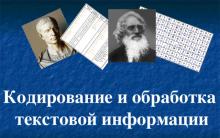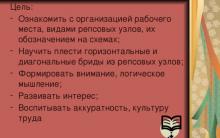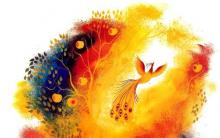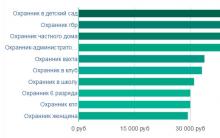In recent months, several readers have contacted the editors of Komsomolskaya Pravda, concerned about the same problem: where are the sparrows disappearing?! It used to be that you would go out into the yard with some bread, and there would be whole flocks of them there. And now - pigeons, crows, woodpeckers, blackbirds... And not even a single sparrow.
Twitter GIVES CONFIDENCE
According to ornithologist, employee of the Russian Bird Conservation Union Elena Chernova, the first calls that sparrows were disappearing from the city began to arrive about five years ago.
Sparrows need a lot of grass and shrubs, explains Chernova. - And here they are carefully mowed and trimmed. The leaves are raked out. Natural lawns are being replaced with artificial turf. So the food supply has decreased.
Some people think that sparrows are moving to the Moscow region. This is wrong. Each area is home to as many birds as the area can support. In fact, in the capital, sparrows are simply dying out. But, oddly enough, they are beneficial! Firstly, they eat all kinds of insects - and this improves the quality of green spaces. Secondly, after they hunt, there are fewer mosquitoes (in particular, on the capital’s beaches).
Well, thirdly, science has proven that the chirping of birds gives a person confidence, the ornithologist adds, because people have lived side by side with them since ancient times. If there are no birds outside the window, city residents become psychologically anxious.
According to Elena Chernova, in some areas of Moscow there are no sparrows left at all. Many requests come from Babushkinsky district, Altufev, Kuntsev. There are also fewer tits, finches, and nightingales. At the same time, there are plenty of pigeons and mallards in the capital. More than 10 thousand ducks wintered this year (according to the Moscow Department of Natural Resources and Environmental Protection).
FEED NOT IN WINTER, BUT IN SUMMER
According to ornithologists, the lack of feeding most likely has an effect. And not in winter, but in summer! On cold days, Moscow residents drag whole loaves of bread to parks and squares (this is partly why ducks have almost stopped flying south from the capital), but on warm days they think that the birds will get their own food.
The sparrow population may also be declining due to widespread disease. Over the years, each bird species experiences fluctuations in numbers. So the number of sparrows in Moscow may recover.
WHAT TO DO?
Vadim MISHIN, head of the Ornitarium project in Sokolniki Park:
In the city, it is necessary to come up with special survival places for birds where they can feed. Such small reserves with favorable conditions for birds to feed and reproduce. Forbs, weeds where you can find seeds, and no artificial turf.
ALL FOR THE COMPETITION
Looking for a bird bush
The budgetary institution "Mospriroda" recently celebrated a holiday - World Sparrow Day. This wonderful date falls on March 20th. In this regard, Mospriroda employees organized an environmental photo quest.
The sparrow is one of the birds most adapted to living next to humans, the organizers explained to KP. - For the winter, sparrows gather in flocks and settle in special wintering bushes. In a typical wintering bush there are several dozen sparrows, sometimes over a hundred. And we offer to take photos of such bushes in Moscow before March 31 - in the yard, in the park or in any other place. The information collected as a result of the photo quest will serve as additional materials in the work on studying the biological diversity of the capital.
Authors of photographs must indicate the GPS coordinates of exactly where the photograph was taken. To do this, you need to go to Yandex.Maps, left-click on the desired location with your computer mouse - and you will receive geographic coordinates (latitude and longitude), as well as a specific address.
If anyone wants to take part in the quest, please send your photos by email [email protected], indicating the participant’s full name and contact phone number. Everyone who does this will receive souvenirs from Mospriroda.
MEANWHILE
Rooks arrived in Moscow
Residents of Lefortovo noticed the harbingers of warmth
In Moscow the temperature is already above zero during the day. It gets dark after 19.00. There are almost no two-meter snowdrifts in the yards. This means spring is somewhere nearby. Moreover, rooks are returning to the capital. The first birds landed in the southeast of Moscow in the Lefortovo area. Several social media users reported this at once.
Since you are reading this, it means you have already wondered where sparrows are so rapidly disappearing from Moscow streets in 2018 and why these birds can be seen less and less often in parks or seen looking out of the window of your house.
It should be noted that you can meet these chordate representatives of birds almost everywhere. Until recently, there were a lot of them in the city center, on its outskirts, in towns and villages.
Rumors about the disappearance of sparrows began to appear in February of this year.
In fact, Muscovites were not mistaken in their guesses: ornithologists (for those who are not in the know, ornithology is a branch of vertebrate zoology that studies birds) indeed reported that the number of sparrows in Moscow has become several times less.
Why are sparrows disappearing and leaving cities?
First, let's figure out why this happens. Undoubtedly, we all know how bad excessive air pollution affects the environment and all living beings. More and more skyscrapers are being built in cities, the appearance of the city is changing, the environment is deteriorating, and nature, unfortunately, is slowly being destroyed.

Naturally, birds, including sparrows, do not like such development. They quickly move to places where they feel more comfortable and safer - to forests, villages, villages, fields, etc.
Indeed, shouldn’t they build nests on the roofs of modern high-rise buildings, among concrete and glass?
How can we help our little brothers
According to other versions of ornithologists, house sparrows are still in cities, but they are hiding. It is necessary to make the capital's parks and squares green as much as possible, it would seem simple, but for some reason this is not happening.
How can we help the sparrows stay in the city on our own? It’s simple, you need to at least make it easier for them to find food, for this you need to make feeders.

What to make a sparrow feeder from? No matter how trivial it may sound, you can make it from anything - a milk carton, cardboard, wood, plastic bottles will do.
What is inside? You can pour non-roasted seeds, processed or hard cheese, and oatmeal (raw, of course) into the feeder.
You can also make a house for sparrows, in other words, something like a birdhouse.
Finally
Well, in conclusion, another interesting reason why sparrows are disappearing:
Recently, as many may have already noticed, utility workers are trying to seal all sorts of cracks in houses and roofs, fill cracks in asphalt with concrete, and reconstruct attics and basements.
It is not surprising that birds tend to fly away from cities.
In this case, birdhouses will come to the rescue, but the problem is that almost no one hangs them, so if you have nothing to do on the weekend, spare a little time and effort, you can make and hang a birdhouse.
Let's not forget that it is we who must help our little brothers!
Bird feeders have been hanging on my balcony for many years. Typically, tits and sparrows arriving for lunch ate at least ten kilograms of sunflower seeds per year. But lately there have been fewer and fewer feathered guests. And over the past winter, a single kilogram bag of sunflowers remained uneaten.
Sometimes only one or two tits flew to the feeder, and the sparrows were not visible at all. What could this mean?
It turns out that ornithologists around the world are sounding the alarm: the number of house sparrows in the world is sharply declining. And these birds are disappearing everywhere - in Europe, America, India, and the Middle East. A couple of years ago, in connection with this, they even established “World House Sparrow Day,” which is celebrated on March 20.
As you know, ornithologists and ecologists consider the sparrow an indicator of environmental quality. If changes occur in nature, he reacts immediately. And it is obvious, the researchers say, that these birds were negatively affected by the deterioration of the urban environment, severe pollution of the soil and street surfaces - after all, sparrows spend most of their lives jumping on the ground. Intensive development and demolition of old buildings, especially wooden ones, where the birds usually nested, also contributed to the elimination of these birds from cities. The fact is that sparrows cannot live in houses made of concrete and glass.
Ornithologists share another alarming observation. The decline of sparrow flocks coincided with a massive increase in mobile communications and global computer networks. And there is a high probability that this also affected the health of the birds and their genetics.
Success in gardening also brings harm to sparrow populations in cities. Once semi-wild parks are disappearing, giving way to cultivated public gardens, in which constant pest control is carried out - and they are the main food for birds. The emergence of newfangled foreign plant varieties that are too tough for local insects is also making itself felt. Various flies and grasshoppers move away from the city, and sparrows fly away with them.
Our information
Those birds that we are used to seeing outside the windows of our houses and in public gardens most likely belong to the species of house sparrows that live mainly in cities. In our country there is also a tree sparrow - an inhabitant of rural areas.
The field one is slightly larger in size than its fellow, its length reaches 14 cm. Their coloring is almost the same - a combination of white, gray, black and brown. And there is a very small difference: the tree sparrow has black spots with brackets on its cheeks and a red-brown cap, while the house sparrow has a brownish-gray cap.
This is a very smart and quick-witted bird. The sparrow is brave and at the same time cautious. He is characterized by extreme “talkativeness.” Perhaps there is no other bird in our region that makes as much noise as a sparrow. He often screams and quarrels. True, quarrels among sparrows occur more often in the spring, when the flocks begin to split into pairs and search for the best places for nesting.
The sparrow is a sedentary bird; it stays in the same place all year round, flying out during the day in search of food and returning at night to the yard where it lives. Sparrows build nests in early spring, when the trees have not yet begun to turn green. The house sparrow's nest is usually placed under loose trim on the wall of a house, in hollow trees, in empty swallow nests, birdhouses and other secluded places. A sparrow's nest is a pile of various rubbish collected from everywhere: dry blades of grass, rags, straws, feathers.
The female lays 5 - 6 eggs of various colors - reddish-white with brown and gray spots. Their parents hatch them alternately. Young sparrows hatch within a couple of weeks. They are fed almost exclusively on insects.
In places where many sparrows live, their young from different nests flock together in common flocks and chirp under the supervision of a nanny - usually an old experienced sparrow who carefully looks around and warns the little ones about the danger.
These birds not only delight us humans with their cheerful chirping. They save trees and shrubs, starting there in early spring to hunt for harmful insects, caterpillars, butterflies, and flies.
It all started when journalist Vladimir Guriev shared on Facebook a phantasmagoric monologue of a taxi driver, which began with the question: “Where have the sparrows gone?” It further turned out that the sparrows in Moscow disappeared due to radiation from cellular antennas, and this same radiation caused a constant squeak in the narrator’s head. Phantasmagoria is phantasmagoria, but many Moscow residents actually noticed that the once ubiquitous sparrows began to be seen less and less often. Editorial N + 1 asked ornithologist Olga Voltsit, coordinator of the “Birds of Moscow and Moscow Region” program at the Moscow State University Zoo Museum, how this impression corresponds to reality and why suddenly one of the most common synanthropic birds began to disappear.
Edward John Poynter. Lesbia and her sparrow (fragment). Wikimedia Commons
In short, it didn’t seem to Muscovites: ornithologists have indeed recorded a decline in the sparrow population in Moscow; according to some estimates, the number of birds has decreased several times. And the reason for this is not in the antennas of cellular networks, but in the improvement of the city, which the Moscow authorities are doing with great enthusiasm.
“We don’t have accurate data yet, only estimates, but we plan to monitor birds, and then we will clearly understand the scale of the population decline. But we have no doubt that it is happening,” says Voltsit.
According to her, house sparrows and tree sparrows living in Moscow feed their chicks with insects, and only after the grown-up chicks fly out of the nest do they switch to seeds. “Previously, all ornithologists regularly observed in the spring and summer how huge clusters of sparrows “grazed” in the grass, collecting insects for their broods. The fledgling seeds were collected in the same grass,” says Voltsit.
However, a few years ago the situation changed dramatically: the Moscow authorities introduced the practice of constantly mowing lawns, in addition, a significant part of them began to be covered with artificially grown roll lawns and covered with peat. As a result, the insects that used to live on lawns have almost completely disappeared.
“Artificial lawns use only one type of grass, which produces no flowers or seeds. Insects were simply physically eliminated when redoing lawns, and besides, insects also need a variety of plants. Ultimately, in Moscow there were much fewer ants, butterflies, beetles, orthoptera - grasshoppers, locusts. But both butterflies and caterpillars are the main food for birds; they feed their chicks mainly with caterpillars. Frequent mowing of lawns also does not contribute to the proliferation of insects,” explains Voltsit.
As a result, the sparrow chicks were left without food.
Many other birds also feed their chicks with insects, many species found themselves in the same crisis as sparrows, but the decline in their numbers was not so noticeable simply because there were few of them anyway. Some species were less vulnerable because they foraged for food on other “floors.” For example, tits feed on insects that live in the crowns of trees.
“Migratory birds, such as starlings, cope more or less successfully because they feed their chicks with earthworms. The pigeons were not harmed in any way, because they feed the chicks with crop gruel, but there are also fewer crows. It is difficult to predict how this will affect urban ecosystems, but the lower the diversity of species, the worse. And solving the problem is very simple - you don’t need to touch the grass with all its diversity, with all the dandelions, as they do in Europe. But for some reason we think it’s beautiful if the grass is the same everywhere,” says the ornithologist.
The results of the “national census” of birds are being summed up in the capital
While the snow is melting on the capital's lawns and parks, bird trills are becoming more and more audible in the morning. April is the month of arrival of birds: you can already see field thrushes on branches in yards. Starlings are expected soon, and in New Moscow you can also see rooks. At the same time, the original Moscow bird, the sparrow, is the subject of special attention and the census of ornithologists this year: in recent years, the number of sparrows, according to observations, has decreased significantly.
In the Muzeon park, a hawthorn grows - decorative, with huge, bright fruits like cherries. Finally, in April, a “consumer” was found for these berries: the fieldfares, which arrived a little earlier than the snow melted, literally graze on the hawthorn in flocks. The snow is strewn with husks and seeds. Here, close by, is a bush that seems to be squeaking from within: a flock of sparrows is nesting in it. Now they are a rare sight for the center of Moscow. Even in the feeders on the windows of houses, where sparrows used to make up the majority, tits now reign. Where are the sparrows? Are they really dying out, as the old people in the park say?
Remember what it was like in China in the sixties? - Natalya Khvostova, a resident of Marshal Vasilevsky Street, laments. - The party set the task, the sparrows were exterminated, then they realized it. It’s the same here - the sparrows were probably poisoned. Because this is such a tenacious bird - it can withstand everything!
Indeed, sparrows are one of the few birds that have fully learned to survive in Moscow even with the current gas pollution. Arrogant, well-fed gray-brown birds are a sign of any fast food: where it is customary to eat while sitting in the car, flocks of sparrows attack the mirrors - give me a bun, otherwise I’ll mark the beak or the hood! This was the case until last year, but now the person’s cheerful friends are nowhere to be seen. The tits are also cheerful, but there were always fewer of them, and the incredibly numerous pigeons do not improve the mood - they are too dirty and dull.
Sparrows have not disappeared anywhere, but their numbers have decreased significantly, some say several times,” Nika Samotskaya, coordinator of the Birdwatching Moscow bird watching program, told MK. - But there is no clear data on this issue, only observations that are coming in more and more. Including observations by professional ornithologists from the “Birds of Moscow and Moscow Region” program.
According to Samotskaya, the main reason for the “sparrow problems” is the improvement of the city. Fledglings (chicks that learn to fly) of sparrows feed on insects, and due to excessive mowing of lawns, and often shaving them bald, and replacement with artificial “rolled” lawns, insects have almost disappeared. “Often insects are deliberately poisoned for some reason,” continues the ornithologist. “Children of sparrows have nothing to eat, and, by the way, not only sparrows, because many, even granivorous, birds feed their chicks with insects.”
Another factor: in recent years, utility workers have been trying to seal all the cracks in houses, in roofs, and fill attics and basements with concrete, notes Samotskaya. Meanwhile, many birds in the city nest in these man-made “hollows.” Birdhouses can save the situation, but no one hangs them up en masse... That is why the number of birds in Moscow is constantly decreasing.
Among the birds that, like sparrows, have a hard time in New Moscow are crows. Until recently, these smartest birds were a real scourge of the Moscow ecosystem - they easily coped with smaller birds (they just didn’t eat pigeons - they disdained them), destroyed egg laying, were inaccessible to almost any predators (cats, dogs, hawks, even hunters had little chance reduce the crow population). But again, the lawns decided everything: crows, like sparrow chicks, also feed on insects living in the grass. And now, as already said, there are interruptions with them...
In the twentieth of March, the Department of Natural Resources of the Moscow Government conducted a “national census” of the number of sparrows in the city. Now its results are being summed up by experts (although the people’s census is just a people’s census and does not pretend to be accurate). We will report the results in one of the upcoming issues of MK.











Such work" Sergey Demyanov
Unsweetened life Can a diabetic work as a security guard?
How long does it take for a parcel from China to Russia from Aliexpress?
How to find a good job - a detailed guide for those who want to get their dream job!
Presentation on the topic “Acmeism